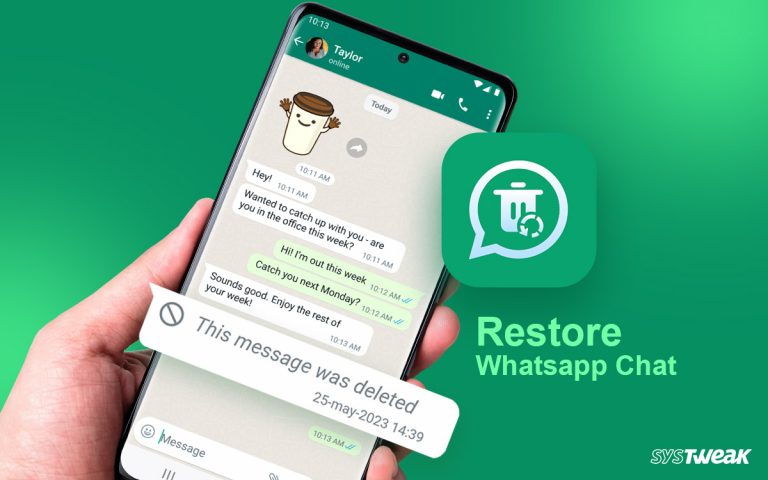The “We couldn’t find any drives. To get a storage driver, click load driver” error often occurs during Windows installation when the setup cannot detect a hard drive or SSD. This is frustrating, as the error prevents you from getting the operating system up and running. In addition, several factors that cause this issue include incorrect storage controller settings, missing drivers, or issues with the hard drive itself.
Fortunately, there are several ways to resolve this error. This guide will walk you through common causes and solutions, including changing BIOS settings, loading necessary storage drivers, and more. By following these steps, you should be able to resolve the error and continue with the Windows install smoothly.
How To Fix Windows 11 Installation Error – “We Couldn’t Find Any Drives
Method 1 – Modify The Type of Storage Controller
Changing the storage controller type from SATA to AHCI can help fix the “We couldn’t find any drives” error. Here are the steps to get your PC to identify the hard disk.
1. Launch BIOS on your PC.
2. Navigate to Storage.
3. Look for AHCI/NVMe and click the radio button before it to activate this mode.

4. Exit the BIOS mode and restart your PC.
Note : The USB drive containing the Windows Installation setup must be plugged in. The PC will now identify the hard disk and then you can proceed with the installation!
Also, Read – Problem Ejecting USB Mass Storage Device on Windows
Method 2 – Fix The Virtual Box
If changing the mode does not work, you can use VirtualBox to fix issues. This involves removing the existing devices and adding new ones, then selecting the correct ISO file. Here is what you need to do –
Delete the Current Storage Devices
1. Launch the VirtualBox and select the virtual machine you want to configure.
2. Choose Settings.
3. In the left section, click on Storage.
4. Choose SATA from the available controller’s list.
5. Click the Remove selected storage controller option.
New Storage Device
6. Click the Add new storage controller icon.
7. Choose Add SATA Controller.
8. Click on Add hard disk and choose Create new disk.
9. Choose Dynamically Allocated. The PC will make a new virtual hard disk.
Choose the Correct ISO File
10. Select the Add Optical Drive option.
11. Select the Choose disk option.
12. Choose your desired ISO file from the list of available options. If the right one isn’t listed, click Add to browse and select the correct ISO file.
13. Click OK to save your changes.
Reboot the Virtual Machine
14. After a reboot, you can observe the available partitions and proceed with the Windows install process.
Also Read – How to Download Intel Rapid Storage Technology Driver On Windows
Method 3 – Opt For A Bootable Disk
To resolve the “no drives detected during Windows 11 Installation” error by creating a bootable USB drive, follow these steps:
1. Create a bootable USB drive.
2. Download the Intel VMD driver, uncompress the files, and copy them to the bootable USB drive.
3. Restart your PC, and press F2 to enter BIOS setup.
4. Go to Main tab in the BIOS setup and make sure the F12 Boot Menu is activated.
5. Switch to Security tab and click Set Supervisor Password section to generate a password.
6. Go to the Boot tab and enable Secure Boot. Save the changes and get out of the BIOS.
7. Plug in the bootable USB drive in your PC, restart your PC, and tap F12 continuously to open the Boot Options Menu. From the menu, choose your bootable drive.
8. Follow the installation instructions. When the “We couldn’t find any drives” error displays, click the Load driver option.

9. Click the Browse icon.
10. Navigate to the Intel VMD driver folder on the bootable USB drive and click OK.
11. Select the driver to install the window, choose the first option, and click Next. The system will automatically install the Intel VMD driver and show the available drives for booting Windows. You can then proceed with the installation.
12. After the installation, restart the PC and enter the BIOS setup again to remove the passwords you set earlier. Save and exit the BIOS setup.
Method 4 – Update Storage Drivers
Updating the Storage drivers can also help fix this issue. To update drivers, you can use any of the three methods below-
Way 1 – Update via the Manufacturer’s Website
Manufacturers typically offer official websites to update drivers and other hardware resources. Visit the website, search for the latest drivers using your device’s model number, and manually update the driver. However, having the correct information about your operating system and device is important. Without these details, you might accidentally install an incorrect driver. To avoid this, most users prefer using Device Manager.
Way 2 – Update via Device Manager
Device Manager is a built-in Windows tool that helps you manage drivers and detect issues. To update a driver through Device Manager, follow these steps:
1. Press Win + X and select Device Manager to open the window.
2. Find the appropriate category (e.g., Display Adapters for graphics drivers), double-click it, right-click the driver, and select Update Driver.

3. Choose Search automatically for updated driver software and follow the on-screen instructions to complete the update.
While Device Manager is convenient, it doesn’t always display the most recent driver updates since it only shows those added to its database. This is why many users turn to third-party driver update tools for the latest drivers.
Read Also: 12 Best (Free & Paid) Driver Updater Software To Fix Driver Issues on Windows
Way 3 – Update via Advanced Driver Updater (Recommended)
Advanced Driver Updater is a reliable and powerful tool designed to update drivers. Before updating, it creates a backup, allowing you to review which drivers will be updated. You can also compare the old and new driver versions. Here’s how to use it:
Note : The trial version allows you to update one driver at a time. You’ll need to purchase the full version to update all outdated drivers at once.
1. Download Advanced Driver Updater. Click the button below to start.
2. Install the application and open it. Click the Start Scan Now button.

3. The tool will list the drivers that need updates. Click Update next to the storage driver.

4. Restart your PC to complete the update process.
Have You Fixed the Windows 11 Installation Error
While installing Windows OS, if you face the “we couldn’t find any drives” error then you have to follow one of the above-mentioned steps. You can either change the storage controller from SATA to AHCI, update the storage driver, create new storage via Virtual box, or use a bootable disk. If you face any issues then you can drop a note in the comments section below.
FAQs
What is the difference between SATA and AHCI?
SATA is a hardware interface used to connect storage devices (such as hard drives and SSDs) to a computer’s motherboard. AHCI is a software interface or protocol that defines how the operating system communicates with the storage controller on the motherboard, specifically for devices connected via SATA
Will Resetting the BIOS Delete My Files?
No, resetting the BIOS will not delete any of your files. It simply restores the BIOS settings to their factory defaults without affecting your data.
Why should you update storage drivers?
Updating storage drivers is important for several reasons, as it can have a significant impact on system performance, stability, and compatibility.
Why Is The Hard Disk Not Recognized By My PC?
Your PC may not recognize your hard drive due to several reasons, including:
- Connection issues
- Incorrect BIOS settings
- Driver problems, and more.
Why Cannot I See My “D” Drive?
This issue may occur if the drive has been accidentally deleted or formatted. You can try creating a new D drive through Disk Management to resolve it.
Suggested Article – Fixed – “We Couldn’t Find Any Drives During Windows 11 Installation











